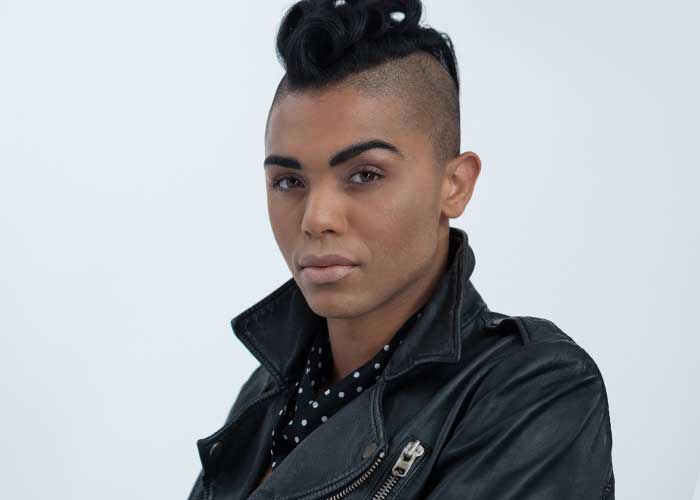What is the Difference Between Transgender and Transsexual?

The terms transsexual and transgender are often used interchangeably, however, they mean different things. Whilst transsexual is a word used specifically to refer to gender dysphoria (formerly called gender identity disorder), transgender can refer to various gender issues. It describes people whose sense of identity and gender doesn’t correspond with their birth sex. What’s even more confusing is that the two terms sometimes overlap. Someone who is transsexual is nearly always transgender, however, someone who is transgender doesn’t have to be transsexual. Let’s take a closer look at the difference between transgender and transsexual.
Transsexual v transgender
What is transsexual?
A person is referred to as a transsexual when they change their sex. For example, someone who was born a male can go on to become female with the help of medical assistance, by taking certain hormones and undergoing sex reassignment surgery. Likewise, someone born as a female can become male with the right treatments. A transsexual person has strong and ongoing feelings of identification with the opposite gender, as well as a discomfort with their own birth sex. It can lead to significant distress, including persistent feelings of depression and anxiety. Transsexual people possess a desire to permanently transition to the gender which they identify. With the correct therapies, they can align their body with their identified gender or sex. Of course, there are some limitations, particularly in terms of reproduction. Transsexuals can’t go as far as to change their genetics, and this means that they can’t acquire the reproductive capabilities of the sex which they transition to. Sex refers to biological features, including the internal and external anatomy, chromosomes and hormones levels. Everyone is born as a male or female, with the (rare) exceptions of those who display characteristics of both the sexes (intersex).
What is transgender?

Transgender has a different meaning to transsexual. The term is used to describe people whose gender identity is not aligned with the sex they were born. It can be helpful to think of sex as a matter of the body and gender a matter of the mind. Gender is a sense of being female or male (or other). It’s widely accepted that gender is complex and has more than two possibilities. For example, someone can be ‘bigender’, which means they identify as two genders, or ‘polygender’, where they identify with several genders at once. It’s important to recognise the huge number of possible gender identities and presentations, and that’s why Facebook added as many as 50 gender options for its users a few years ago. In fact, the site even lets you enter your own preferred terms. It’s also worth noting that gender is influenced by other factors, including class, culture and race. This is because activities, behaviour and activities which are viewed as appropriate in one group may not be viewed as such in another.
Gender identity and sexual orientation
Gender identity and sexuality are two distinct concepts. Whilst some individuals experience them as totally separate, for others they overlap and are intertwined. The American Psychological Association refers to sexual orientation as a person’s physical, emotional and/or romantic attraction to someone else. Transgender people can be straight, gay, lesbian, bisexual or even asexual. For example, someone born as a male may transition to being female but may be attracted to females. In this case, they would identify as a lesbian even though they were born with male genitalia. It’s sometimes claimed that some people choose to align with trans identity instead of as gay or lesbian because homosexuality is seen as unacceptable in their society.
The world of dating for trans people
Navigating the world of dating can be difficult for anyone, but for trans people, it can be even more challenging. A study carried out earlier this year revealed the extent of the discrimination they face when it comes to building romantic and sexual relationships. Almost 1000 cisgender people (those whose sense of personal identify corresponds with their birth sex) were asked if they would date a trans person. They were required to indicate which genders they would consider dating. Only 12% selected “trans woman” or “trans man”. Those would consider dating a trans person were older, more likely to be well educated, and less likely to be religious. However, the most striking differences were regarding gender and sexuality. Nearly all heterosexual people in the study said they wouldn’t date a trans person, with only 3% of straight men and 1.8% of straight women saying they would date a trans person. Gay people were slightly more open to the idea, but only slightly more so. It was bisexual and non-binary people who were most trans-inclusive, with half of them down for dating a trans person. The dating landscape isn’t entirely comfortable for the trans community and finding love can be difficult, especially with so few people willing to embark on relationships with them. However, this is likely to change in the future as dating sites and apps become more trans-friendly.
The difference between transgender and transsexual can be difficult to establish, particularly as there’s some disagreement over the definition of these terms. However, in general terms, the word transgender refers to people whose identities contrast with the biological sex. For example, a trans person who was born female may identify more as a man, choosing to take steps such as using male pronouns, dressing as a man and engaging in activities which are more associated with men. A transsexual is someone who makes a physical transition to the opposite sex from which they were born. This may involve taking hormones and undergoing gender reassignment surgery. Hopefully, this article has given you a deeper insight into the differences between transgender and transsexual.